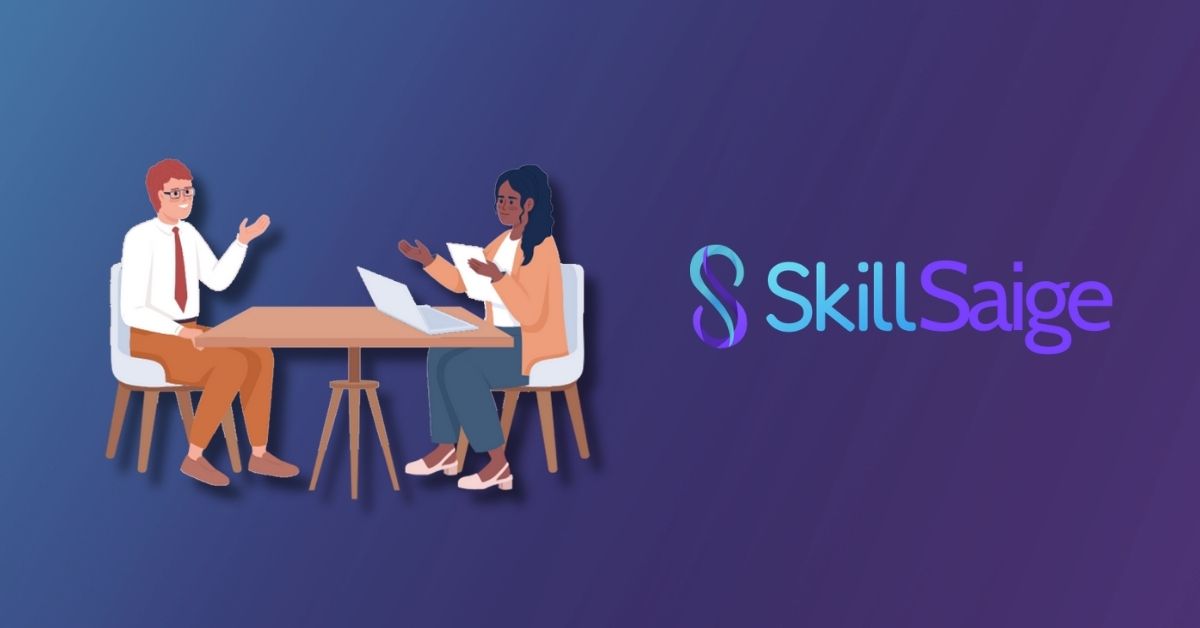Ace Any Interview: 20 Must-Know Interview Questions & Pro Answer Strategies Part 2
01 Aug 2025 – SkillSaige Team
Master the art of interview success with this two-part tactical guide covering the top 20 interview questions and answers. In our first article, we covered the dreaded “Tell me about yourself” to “Why should we hire you?” and “What is your weakness?” style questions. Now, let’s focus on the dreaded “Tell me about a time…”
This article prepares you for behavioral interview questions: the kind that ask “Tell me about a time when interview questions…” The secret? Use the STAR interview method (Situation Task Action Result) to structure clear, compelling answers. And if you need to review the other questions, check out the first part here.
These interview tips will help you craft winning responses, but the best preparation is interview practice. Ready to test your skills? Download SkillSaige on iOS to refine your answers in real time.
Let’s dive into the most common (and toughest) questions recruiters ask, and how to nail every one.
11. How do you prioritize tasks?
Goal: Show organizational skills. Strategy: Mention tools (e.g., Eisenhower Matrix) and examples. Example: “I categorize tasks by urgency/impact. For instance, I deferred a low-priority report to resolve a client issue, boosting satisfaction by 30%.”
12. What motivates you?
Goal: Align with the role’s day-to-day expectations. Strategy: Tie motivation to the job (e.g., impact, growth). Example: “I thrive on solving customer pain points, like when I streamlined a process that reduced complaints by 25%.”
13. Describe a time you failed.
Goal: Demonstrate learning, not blame. Strategy: Focus on the lesson, not the mistake. Example: “I believe there is only learning and success. I missed a client’s feedback deadline early in my career. I learned to set reminders and confirm timelines upfront to avoid delays.”
14. Explain your career gap.
Goal: Be honest but concise. Share your values as an employee. This is a two-way street. Strategy: Focus on skills gained. Example: “I believe in a work-life balance. I took time for myself and my family but stayed sharp by freelancing and earning a certification in [relevant skill].”
15. Are you a team player?
Goal: Prove collaboration skills. Strategy: Share a team success story. Example: “I collaborated with engineering and design to launch a feature that increased user retention by 15%.”
16. What is your work style? Goal: Fit the company culture. Strategy: Research their environment (e.g., remote, structured). Example: “I’m self-driven but love weekly syncs to align priorities: similar to your agile approach.”
17. How do you handle stress?
Goal: Prove productivity under pressure. Strategy: Share a specific tactic. Example: “I break tasks into smaller steps and use time-blocking. During a high-stakes launch, this kept my team on track.”
18. How do you handle feedback?
Goal: Show humility and adaptability. Strategy: Example of applying feedback. Example: “My manager suggested I simplify my presentations. I took a data visualization course and now my decks are 20% more engaging.”
19. What’s your dream job?
Goal: Connect to the current role. Strategy: Highlight overlap. Example: “This role combines my love of data analysis and mentorship—exactly the path I envision.”
20. End of interview questions to ask recruiters/ Do you have questions for us?
Goal: Show engagement and curiosity. Strategy: Ask about:
- Team dynamics.
- Success metrics.
- Challenges the team faces. Example: “How do you measure success for this role in the first 6 months?”
TL:DR Interview Tips
- Use the STAR method for behavioral interview questions.
- Tailor answers the job description.
- Quantify achievements with numbers.
- Practice aloud for natural delivery
- Record yourself
Ready to practice live and interactive interview questions? Practice for free using SkillSaige
These interview questions and answers cover critical topics to help you impress recruiters. For more, explore our guide on how to answer interview questions effectively.
Related Posts
SkillSaige Unveils Major Update
SkillSaige Unveils Major Update: Smarter Home Experience, Daily Rewards, and a More Engaging Platform
17 Nov 2025
The Unwritten Rules of Professionalism: How to Navigate Company Culture Without Losing Your Mind
Landing your first job (or even your fifth) isn’t just about hard skills and experience. It’s about mastering the unspoken rules of professionalism and office etiquette. And let’s be honest: no one hands you a manual titled “How to Not Accidentally Annoy Your Boss While Still Being Yourself.”
30 Sep 2025
How to Showcase Achievements in Your Cover Letter (Using the STAR Method)
Most job seekers’ cover letters for resumes miss the mark, but yours won’t. If you’ve ever wondered how to write a cover letter that actually gets read, you’re not alone. The secret? Speak directly to hiring managers and job recruiters by blending professionalism with personality. This guide cuts through the noise with actionable strategies to make your application impossible to ignore.
25 Sep 2025
